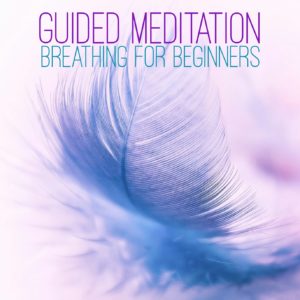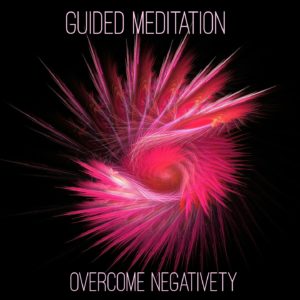Relaxing Music for Mind Body & Soul
Welcome to Music2Relax.com: Enjoy Free Playlists & Download Mind Body Relaxing Mp3 Music, Guided Meditations & Nature Sounds for Relaxation, Meditation & Sleep Read More Play and download mp3 music for relaxation, meditation, focus and sleep for a healthy mind body and spirit. Music To Relax is a website with a wide variety of relaxing music, and original tracks that you can play for free and download. We offer you a unique set of calm music and soothing sounds. We at Music to Relax believe that music in itself is healing, it is something we all are touched by no matter who we are or where we come from. This website is an independent music project, consisting of the most relaxing music, made with the intent to provide a sublime state of relaxation for the listener. Today there are a lot of music sites and streaming platforms, it’s a jungle out there, it can be overwhelming and not that easy to locate the right type of music. At our website Music to Relax you can for free enjoy all our music as much as you want whenever you wish to. We offer you only the best music for relaxation, meditation, concentration and sleep, play and download mp3 music at Music2relax.com Listen to our classical and beautiful instrumental music for creative inspiration. Play our deep sleep music with delta brain waves to unwind and fall fast asleep. Drift off to gentle nature sounds of ocean waves after a long day. Play peaceful mind relaxing meditation music during your yoga practice. Concentrate better with our unique study music with alpha brain waves to focus on your studies and exams. Enjoy our smooth and cool chillout lounge music with your friends. Listen to our soothing spa music while taking a bubble bath at home. Let the peaceful sounds available at this site, relax your mind body and spirit. Binaural Beats, Alpha, Delta and Theta Brain Waves: Binaural beats, so-called brainwaves are divided into three groups, that is alpha brain waves, delta brain waves and theta brain waves. These waves are used to naturally encourage relaxation in mind body and spirit. Slow beats can change brain wave speed, inducing a brain activity comparable to a meditative or a hypnotic state. We combine binaural beats with relaxing music for a more enjoyable experience. Pure binaural beats are used as an enhancement to improve one’s life and to make us more efficient in today’s busy and stressed-out society. Theta brain waves are great to keep the mind from wandering off during meditation and yoga. The binaural beats for meditation encourage relaxation and inner peace and a more intense experience. Delta brain waves are used to improve sleep problems. Deep binaural beats for sleep will make you fall asleep much faster and enjoy a deeper sleep. Even people who suffer from insomnia benefit from pure delta waves. Alfa brain waves make it easier for you to study because your concentration on the task is intensified by the alpha binaural beats. Music for studying helps you to be a better student that understands and learns faster, for better education and higher grades. Study music with alpha brain waves intensifies your focus and concentration while reading and writing. Studying to relaxing music makes it much easier to absorb information, it will help you to accomplish more and the quality of your understanding and learning will be much better. When school and college get stressful, finding music that works for you will make you more productive for sure. Chillout Lounge Music: Play our chill laid-back beats at Music to Relax for free. Chillout music became popular in the 1990s at clubs where relaxing music was played in chillout rooms for club visitors who needed to relax after dancing all night. Chillout lounge music is today a popular form of music, played at lounges, bars and clubs. Ibiza chillout music is however mostly played at beach parties and nightclubs. Relaxing chillout lounge music can for the avid listener work perfectly as an antidote against stress and anxiety. Lounge music, like Buddha bar lounge music, is increasingly played at upscale and trendy bars as it creates a relaxed and cool atmosphere with its easy-listening beats with ethnic influences. Another popular chill music genre is the Latin American music genre. It is very wide and includes many different music styles. Mid to downtempo instrumental music with relaxing guitar riffs, sensual beats and romantic instrumental sounds originating from Spain, Latin America and the Caribbean. Play and download mp3 music of our best Spanish guitar music. Smooth jazz music is a fusion of African beats with European musical orchestra instruments. Jazz is a music genre that originated in the United States. Chill to our free relaxing music and play and download mp3 of cool relaxing music at Music2relax.com. Ambient Space Music: The emphasis in ambient music is on atmosphere and tone over conventional musical structure and usually it lacks a structured melody. Our relaxing ambient space music are made to evoke an enjoyable mood and a great atmosphere, music that uplifts the spirit and keeps you calm and relaxed. Instrumental Music: Calm music without singing or lyrics (that is no vocals) where the main focus is on the musical instruments. Play and download mp3 of soft instrumental music to encourage your body and mind to relax. Many people prefer relaxing instrumental piano music to fall asleep to, others just love how the sound alters their consciousness and mood positively. The most popular instruments for recreation and leisure are piano, guitar, flute, harp and violin. The soothing effect of relaxing music is well known, the harmonies can move us and change the atmosphere in a room. Soft instrumental music has the power to do so much for the avid listener, it causes the brain to release dopamine, known as the” feel good” chemical which will make you feel all these good emotions like happiness, joy and excitement. Romantic Instrumental Music: Romantic and sensual music that gives rise to loving and caring feelings is great during intimate or romantic moments between two people. Overwork and stress are one of the big reasons people lose that loving feeling, this is where romantic instrumental music can help you and your partner to get it back. Enjoy our free sound, play and download mp3 of our beautiful romantic music made for lovers. The two of you will connect on a more intense and deep level and that will bring you much closer than before. Free relaxing music that gives rise to good and exciting feelings between two lovers adds spice to the relationship, especially when it has been a while since the last romantic moment. Relaxing Classical Music: The original relaxing music is the classical music genre, from the peaceful and beautiful nocturns by Frederic Chopin or the calming concertos by Amadeus Mozart. Classical music works great as background music for leisure, learning and resting. Some also prefer to listen to relaxing classical music when it’s time to sleep. The power emitted from beautiful classical music is well known, it affects our feelings and thoughts and it can also be a very effective tool against stress and anxiety. Listening to relaxing instrumental music on a regular basis can have a positive effect on your mind body and spirit. Play and download mp3 of our relaxing classical music to improve important physical functions, for instance it affects the heart rate positively and slows down the pulse, and lower high levels of stress and blood pressure. Musical preference is very individual and even if you don’t listen to classical music it may be worth trying it out just for the incredible health benefits coming from it. Trending Fusion Music: That is, one mixes music (or nature sounds) from completely different styles of music and fuse them together. For instance, fusing relaxing piano music with a soothing nature sound like ocean waves or rain sounds, or mixing atmospheric ambient space music with new age sounds like Tibetan singing bowls or Indian meditation mantras and chanting. Fusion music is very interesting and quite popular right now, especially in Youtube where one may find 1000s of many interesting music fusions. The mind relaxing music mixes or fusions available on this website are all very easy on the ear and can be perfectly used as background music whilst studying, resting, contemplating etcetera. Oriental Music: Play and download mp3 of the best instrumental music from India, the middle east, China and Japan for free at Music to Relax. Enjoy our inspirational and beautiful music from all corners of Asia. Exotic harmonies and lovely melodies from our instrumental Chinese, Japanese and Indian music. By now you know how good relaxing music is for your health. Music for relaxation is also capable of reducing high levels of cortisol, a stress hormone, which affect our immune system negatively by weakening it which raises the risk of catching a disease. Stress can also disturb learning and cause memory loss. Research on the matter has shown that listening regularly to mind relaxing music for 30-50 minutes raises the levels of antibodies against cortisol, “music therapy” can be as effective and helpful as meditation if it’s done properly. Peaceful Pet Music: Calm music is not only for us humans to appreciate, many animal owners today want their furry or feathery friends to calm down and relax for different reasons. Unfortunately, there are many dogs, cats and birds that are lonely or anxious and could use some relaxing and therapeutic music, especially pets that spend a lot of time alone. The best alternative for a lonely animal is companionship, however relaxing music composed especially for dogs and cats can have a very positive effect on the pet. Soft instrumental music can be just as effective on a dog or cat as on a human being, it can help them to unwind, de-stress and sleep. Gentle music like relaxing piano music with serene nature sounds and soft classical music is the perfect music for an anxious or lonely dog or cat. We produce peaceful music specifically made for dogs and cats, to suit their needs and preferences. Calm Meditation Music: Relax your body and mind with peaceful meditation music, sounds that assist contemplation and bring inner peace. The ancient practice of meditation, which does not have to be religious, can be practiced in many different ways and can be highly individual, whatever works for you. Relaxing meditation music for inner reflection can encompass a wide variety of different instruments, harmonies, ambient and nature sounds, generally with a serene and calming composition. We at Music2relax.com incorporate theta binaural beats, or theta brain waves to encourage a more intense and profound experience. Enjoy our serene and free music as much as you like, play and download mp3 of the best meditation music available only at this website. Calm meditation music has many similarities with New Age music, Yoga music, Healing music and Zen music, for instance, they all encourage you to feel relaxed, refreshed and peaceful. Healing Meditation Music: This is relaxing music produced with the purpose to heal your mind body and spirit, to improve the quality of life and well-being of the listener. Healing meditation music is part of the popular New Age music genre, music for inner peace and recreation. Believers of underlying energy fields and life forces, like chakra, kundalini and chi (qi) energies, believe that these forces can be activated by meditation music. When you are in a complete state of relaxation, your body’s natural ability to heal itself is significantly enhanced. Whether you are listening to healing meditation music or silent meditation, you can help the body to renew itself. Music for healing can reduce the perceived intensity of physical pain and it is also very effective as an antidote against depression and stress. The body’s natural healing ability is enhanced when the mind and body are completely relaxed. Deep relaxing music can therefore assist the body in releasing its healing powers. An improved physical healing process has been seen in patients that listened to calm music before, during and after surgery. Ancient Native Americans, Africans and Indians used chanting and drums during healing rituals and ceremonies. Human cultures all over the globe have through centuries used music for healing, recreation and enjoyment. New Age Music: Music to encourage creative inspiration and positive feelings to relax your body and mind. New Age music can be used to produce a peaceful atmosphere during an activity like yoga, spa, or massage. Great music can affect us deeply even unconsciously, why it’s important to choose the right type of music. Yoga Meditation Music: Calming music for physical and contemplative yoga. Yoga meditation music is not that different from meditation and new-age music, because a big part of yoga is meditation. Listening to music during yoga gives you a better exercise in many ways. The music can boost the mood and distract you from uncomfortable poses during a yoga session, it can also increase your strength. Yoga meditation music will help you to calm down the mental chatter and that will make it easier to reach each yoga pose more intensely and hold them much longer, you need to be in the moment and slow down the breathing, this will make your yoga session a more satisfying experience. You will have a more fulfilling yoga experience thanks to the free relaxing music available on Music2relax.com. Zen Meditation Music: Zen means to live in the now and have an awareness of the oneness of everything. Relaxing Zen meditation music is mainly instrumental Chinese or Japanese music with additional soothing sounds from nature, like water bamboo fountains, relaxing ocean waves and cascading waterfalls, sounds that make the music a very peaceful experience. To have inner peace in these stressful times can be rather difficult. By listening to relaxing music, a sense of balance is introduced to a busy lifestyle, you create a sacred place of peace which allows each day to be experienced fully, from a place in aligned with one’s true nature. Play and download mp3 of Zen meditation music to achieve peace of mind, that is to be Zen, a complete state of relaxation with a sense of inner calm and ease. Zen meditation practice should be practiced regularly in everyday life in order to have a balanced life. Meditation helps to silence the mind and bring you to a deep stillness. Music Therapy: Calm music therapy is a great tool to improve health or to help address social, cognitive, emotional, or physical needs. Music can do much more for you than just put you in a good mood or uplift your spirit, there are incredible health benefits for those who regularly listen to music. Music therapy affects our autonomic nervous system, the part of the nervous system responsible for controlling our brain function, heartbeat and blood pressure. It also affects the limbic system, the part of the brain that is responsible for emotions and feelings. Both these systems react effectively to relaxing music therapy, when soft slow music is played your heartbeat and blood pressure slows down. This affects muscle tension in the back, stomach, shoulders and neck. Besides the positive effects on the body, music therapy reduces mental tension in your mind as well. Listening to therapeutic music regularly is very beneficial for the mind body and spirit, for instance, it prevents physical and mental pain. The vascular health of the listener is also improved, the heart is strengthened and patients suffering from heart disease recover much quicker, because of the endorphins that the brain releases. Spa Relaxing Music: Music made for spa and massage is very peaceful, it should make you unwind, de-stress and feel at ease. Spa relaxing music is generally composed of soft instrumental music with soothing nature sounds, most popular sounds from nature are relaxing ocean waves, water and rain sounds. We all need a little time for ourselves sometimes, relaxing after a long day to enjoy a massage or a warm bubble bath is a good way to make that time. Make the most of your spa experience with scented candles and your favorite spa music and drift away into a relaxing bliss. Play and download mp3 of calming spa and massage music, available at Music to Relax, as a stress relief and relaxation aid. Sleep Music: Deep sleep music is a great way to help you fall asleep and sink into a deep relaxing sleep with the help of delta brain waves. Some prefer sleep music to stimulate lucid dreaming, others with sleep difficulties like insomnia listen to soothing music because it helps them to relax at bedtime and for improving the chance of falling asleep. Improve your sleep quality, fall asleep faster and sleep more deeply while listening to our relaxing deep sleep music specially created for a better sleep cycle. Deep delta waves help to quiet the mind and allow you to let go of the day’s worries. People with complete sleep deprivation like insomnia might in some cases be effectively treated by the right type of deep sleep music. That is, music with delta brain waves because it is a safer and cheaper alternative than sleep-inducing medication. Anxiety and stress interfere and disrupt the sleep of millions of people worldwide. Tossing and turning and overthinking keeps many of us up all night. Listening to free relaxing music for sleep at night time will have a great effect on your sleep. For example, instead of worrying in your bed your attention is no longer on your thoughts that keep your mind active, but instead calmed by the relaxing sleep music, which relaxes every muscle on the body and thus makes it easier to fall asleep. White Noise: To help you rest during the day and sleep during the night. White noise is a mixture of sound waves over a wide frequency range, that is often mixed with soft instrumental music to encourage deep sleep. The most common thing that interferes with sleep is anxiety as mentioned above, the right type of music or sound can change this and improve sleep quality. White noise has the ability to affect you in a number of positive ways, it encourages better sleep patterns for people with sleep problems and it also encourages a night of more restful sleep. Soft music for relaxation, meditation and sleep can in some cases be effectively used to treat insomnia, it can effectively relieve symptoms of depression, when one is feeling down and hopeless, the right type of relaxing music can be as helpful as exercise. Listening to your favorite tune or peaceful music on a regular basis has been shown to reduce anxiety. Patients suffering from depression and insomnia had a positive response to the auditory stimuli (music therapy) conducted on them, it affected the patients’ psyche, mood and quality of life. Many music enthusiasts can confirm that their favorite music has had a tremendous effect on their mental well-being. Baby Sleep Music and Lullabies: Soothing baby music and beautiful lullabies to calm babies, toddlers, infants and children can be a big help for parents at bedtime hours. Our free relaxing music for children can also be used during the daytime and evenings before naptime. Playing relaxing baby music for a crying child is a very effective pacifier. Lullabies and calm instrumental music are the most effective type of soothing melodies. It will help the baby to fall asleep much quicker than without any music. Baby sleep music can also be good for the child’s development, their minds are activated by sensory audio stimulation which is important for healthy brain development. Music like classical Mozart and Beethoven music could in that sense be used as a tool for the child’s physical and emotional well-being. Music stimulation and education at an early age are good for young children in many ways, it improves their visual, communication and verbal skills. Nature Sounds: Mother Nature is a great composer, her many sounds are one of the most relaxing sounds we know of. When people think of soothing nature sounds, cascading waterfalls, gentle rain sounds, calming mountain streams and peaceful ocean waves come to mind. Many different types of mind relaxing music for instance Zen music, Spa music and Meditation music incorporate relaxing nature sounds to enhance good feelings and to positively affect the body mind and soul.Original Relaxing Music Downloads and Mind Altering Music Only at Music to Relax
The Best Mind Relaxing Music – Peaceful Music for Mind Body and Spirit
Fall Asleep to Our Deep Sleep Music – Play and Download Mp3 Music at Music2relax.com

























